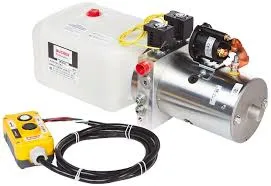Aug . 02, 2024 14:51 Back to list
High-Quality Hydraulic Cylinder Rod Manufacturing Process and Industry Standards Overview
The Importance of Hydraulic Cylinder Rod Manufacturing
Hydraulic cylinders play a crucial role in various industries, providing the necessary force to power machinery and equipment. At the heart of these cylinders lies the hydraulic cylinder rod, an integral component that transmits force and facilitates the movement of the piston. The process of manufacturing hydraulic cylinder rods is critical to ensuring their performance, durability, and reliability. In this article, we will explore the significance of hydraulic cylinder rod factories and the processes involved in their production.
Understanding Hydraulic Cylinder Rods
A hydraulic cylinder rod, often referred to as a piston rod, connects the piston within the cylinder to the machinery it operates. When hydraulic fluid is pumped into the cylinder, it generates pressure that pushes the piston and, consequently, the rod, resulting in linear motion. The rods must withstand high levels of stress and pressure, making their construction fundamental to the effective operation of hydraulic systems.
The Manufacturing Process
The production of hydraulic cylinder rods involves several key stages, each designed to ensure the rods meet industry standards and performance requirements
.1. Material Selection The journey begins with the selection of appropriate materials. Typically, high-quality steel is chosen for its strength and durability. Some manufacturers may use alloy steels that offer better resistance to wear and fatigue, enhancing the product's lifespan.
2. Forging and Machining The chosen material is then subjected to forging, where it is heated and shaped into the rough dimensions of the rod. This process enhances the material's structural integrity. Following forging, machining processes such as turning and grinding are employed to achieve precise dimensions and surface finishes. Precision is vital, as even minor discrepancies can lead to improper functioning and reduced service life.
hydraulic cylinder rod factory

3. Heat Treatment After machining, the rods undergo heat treatment to improve their mechanical properties. This involves controlled heating and cooling processes that alleviate internal stresses and enhance hardness and toughness. The right heat treatment process is essential for achieving the desired balance between strength and ductility.
4. Surface Treatment To protect the rods from corrosion and wear, surface treatments are applied. This might include processes such as chrome plating or coating with specialized materials to enhance resistance to environmental factors. A well-finished surface reduces friction and extends the operational life of the hydraulic systems.
5. Quality Control Throughout the manufacturing process, strict quality control measures are implemented. This includes both in-process inspections and final testing of the rods. Rigorous standards ensure that every rod can withstand the specific pressures and conditions it will face in operation.
The Role of Modern Technology
In recent years, technological advancements have transformed hydraulic cylinder rod manufacturing. Computer Numerical Control (CNC) machines allow for higher precision in shaping and finishing rods. Additionally, the use of automated systems enhances efficiency and reduces production times.
Moreover, advancements in materials science have led to the development of new alloys and coatings that offer superior performance. These innovations not only improve the quality of hydraulic cylinder rods but also contribute to more sustainable manufacturing practices.
Conclusion
Manufacturing hydraulic cylinder rods is a complex process that requires careful attention to detail and adherence to high standards. The role of hydraulic cylinder rods is critical in numerous applications, from construction machinery to aerospace systems. As industries continue to evolve and demand higher performance from hydraulic systems, the importance of quality manufacturing practices in hydraulic cylinder rod factories cannot be overstated. Investing in advanced technologies and materials will be key to meeting future challenges and ensuring the efficiency and reliability of hydraulic systems worldwide.
-
1.5 Ton Flipping Oil Cylinder 70/82-40-217-720 - Hebei Shenghan Hydraulic Machinery Co., Ltd.
NewsSep.01,2025
-
1.5 Ton Flipping Oil Cylinder 70/82-40-217-720-Hebei Shenghan Hydraulic Machinery Co., Ltd.
NewsSep.01,2025
-
1.5 Ton Flipping Oil Cylinder-Hebei Shenghan|Precision&Custom Solutions
NewsSep.01,2025
-
1.5 Ton Flipping Oil Cylinder 70/82-40-217-720-Hebei Shenghan Hydraulic Machinery|Precision Engineering&Customization
NewsSep.01,2025
-
1.5 Ton Flipping Oil Cylinder 70/82-40-217-720 - Hebei Shenghan | Hydraulic Solutions, Customization
NewsSep.01,2025
-
1.5 Ton Flipping Oil Cylinder 70/82-40-217-720 - Hebei Shenghan Hydraulic Machinery Co., Ltd.|Precision Engineering&Customizable Hydraulic Components
NewsSep.01,2025
